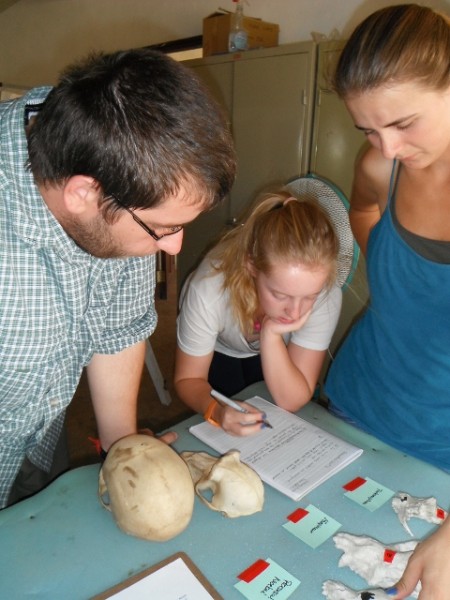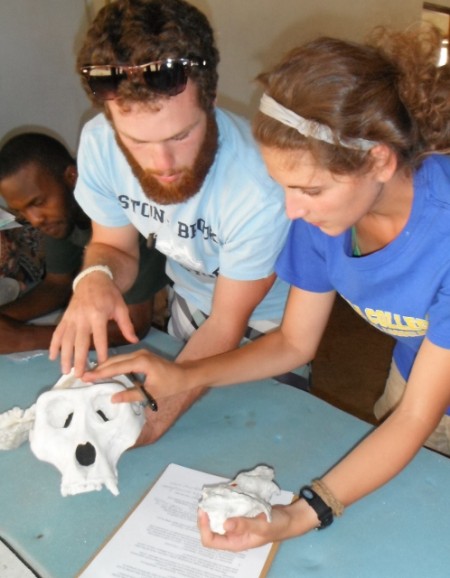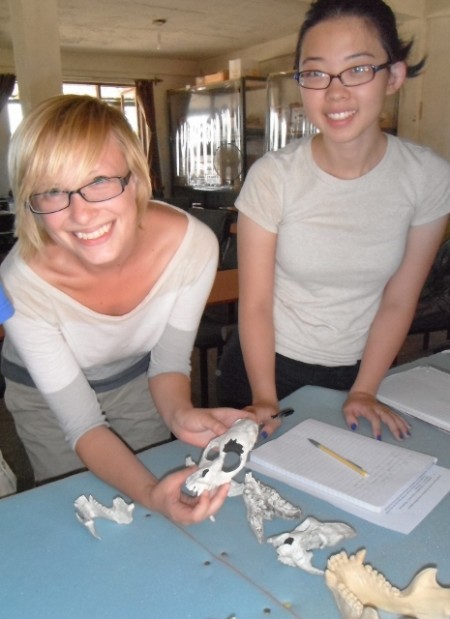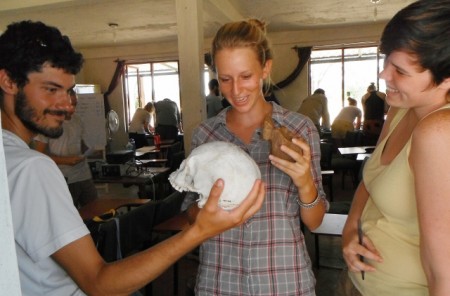Students have been learning more about the animal skeleton and muscles. Bones can tell us about how muscles were attached. Muscles can tell us about what kind of movements an organisms was adapted to performing. So even with only a few key bones, we can learn a lot about an extinct animal. Teeth can reveal a lot of information too. For example, the tooth surface topography or tiny scratches on the enamel, can tell us whether an animal is/was adapted to eating fruit, leaves, grass, seeds, nuts, or meat.
Students also learned about our very early primate ancestors that lived between 45 – 10 million years ago. The fossils record indicates that monkey –like animals first appear in the Oligocene (45 mya) but they only became very diverse much more recent. Apes, the lineage of the modern day chimpanzees, gorillas, and us, were very diverse in the Oligocene but many species seemed to have disappeared when moneys diversified. A more direct ancestor to gorillas and chimps is not yet known…but tomorrow, students are journeying out to find such illusive fossils!











